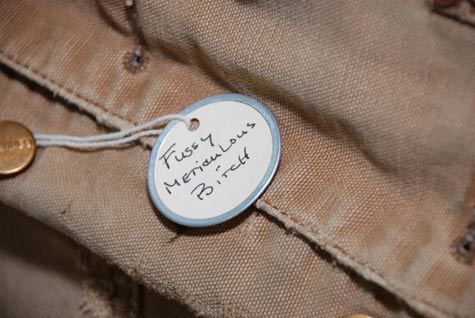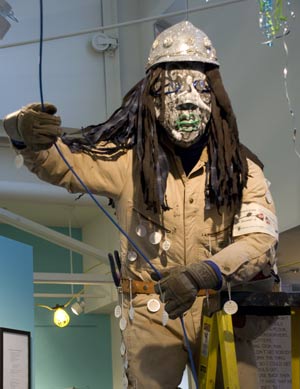
On Equal Terms: Women in Construction 30 Years & Still Organizing |
In 1978, the federal government under President Jimmy Carter put forth timetables and goals aimed at increasing the number of women and minorities in the construction industry. The Department of Labor predicted that under the new federal guidelines, the percentage of women in the construction industry would grow exponentially, so much so that by the year 2000 a quarter of the total construction workforce would be women. | On Equal Terms:Women in Construction 30 Years & Still Organizing | by Susan Eisenberg | Adams Gallery in David J. Sargent Hall, First Floor, Suffolk University Law School, 120 Tremont Street, Boston | 9 am-7 pm daily | through March 17, 2009 | 617-305-1782 |
The estimate was so far off base, it didn't even come close to reality. According to the US Bureau of Labor Statistics, the number of women in the construction and extraction industry in 2007 averaged out to a measly 2.7 percent. In Boston, the figures are even more dismal. A recent Transportation Equity Network study found that in 2006, the percentage of women in this city's construction industry equaled just one percent.
In order to shine some light on the inequality – as well as call attention to the strong, talented tradeswomen who wire this country's buildings, lay out piping systems, and fabricate metals – the local artist and poet Susan Eisenberg, herself a pioneering tradeswoman who came into the business in 1978, has unveiled On Equal Terms: Women in Construction 30 Years & Still Organizing at the Adams Gallery at Suffolk University. The exhibit features poetry, found materials, sculpture, audio, and photography and was previously on display at the Women's Studies Research Center gallery at Brandeis University, where Eisenberg is a visiting artist scholar.

On Equal Terms highlights how unaccommodating the construction industry has been towards women, then and now. One of the pieces, a life-size bathroom shack outfitted with crude, misogynistic graffiti, calls to mind the difficulties women have had in obtaining access to better bathroom facilities on the job. But the exhibit is not without its lighter moments, from an area where gallery goers can try on hard-hats in the mirror, to a collection of T-shirts from women's trade groups across the country. We chatted with the artist by phone last week about the contradictory nature of her exhibit as well as her own experience as a trailblazer in her industry during the Seventies.

Stella |
Much of the work you've done over the course of your career as a poet and artist has been to do with labor issues. Tell me about how you got on this tack.
I come out of the construction industry. I worked 15 years as an electrician on union job sites in this area. I came into the industry in 1978 at the beginning of affirmative action when there were high expectations that women would begin to enter the trades, and that the industry would change. That really didn't happen.
I was trained as a poet and did theater before I came into the trades. Understanding what that experience was through the arts was just something that was always part of what I did. So I had a chapbook come out when I graduated my [electrician's] apprenticeship. So that's sort of a role that I played and part of how I understood the experience for myself.
I myself can't imagine doing this kind of work. I quite like sitting in an office without risking bodily harm every day. What was it that attracted you to the trades?
Well I think some of the reasons that I first got into it were incredibly naïve. One thing is I liked the idea of working outdoors, but you know in the winter that's really not that pleasant a thing to do. So it's somewhat how it looked to me on the outside. But one thing that I really understood much better from the inside was how much intelligence and creativity and ingenuity it takes from people who are on the ground on the construction site that makes buildings go up safely and looking right. I think there are a lot mistakes in the plans of architects and engineers that are corrected on the ground. I think that's not very well understood outside the industry, but it's certainly very clear when you're working on a jobsite.
Your current exhibit is calledOn Equal Terms: Women in Construction 30 Years & Still Organizing. What inspired you to put it together?
At a certain point it became clear that there was such a discrepancy between the numbers of women in the trades and what had been expected. One had to either explain this one of two ways. Women aren't interested or capable, which was the kind of official understanding. Or you had to say there must be some obstacles here that aren't being addressed. Which to me seemed more like what made sense from the stories that tradeswomen had.